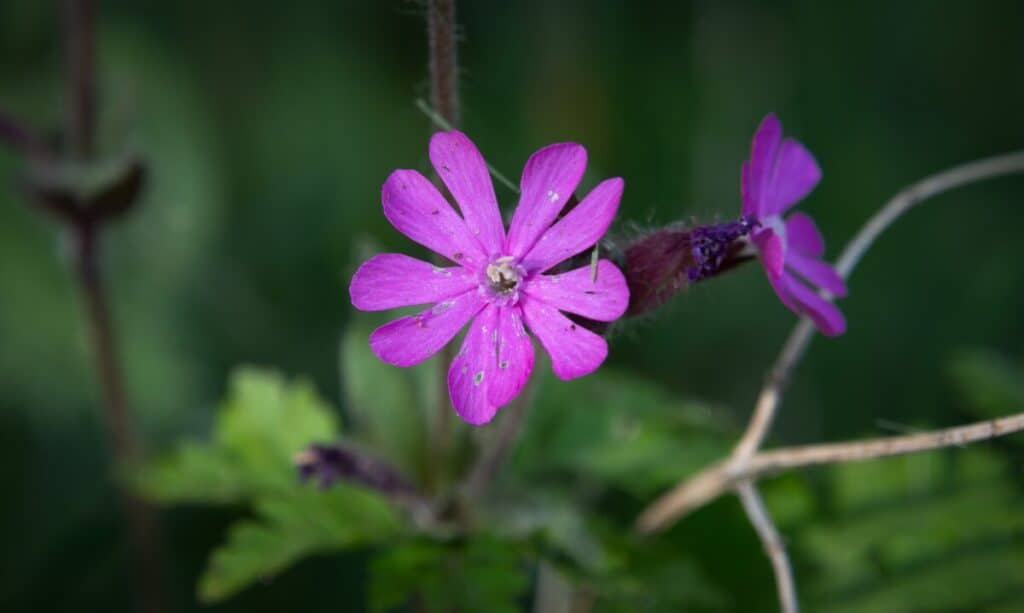The nature trail through the deciduous wood on the way to the motte and bailey site, provided an example of red campion to the left of the trail. The red campion does not have a scent unlike the white campion, it is a tall handsome plant with masses of red flowers which would complement any garden. Both red and white campions are hedgerow plants, but the red variety is more likely to be found in woodland shade than the white. Where red and white plants are found together they can hybridise, with flowers in a wide range of pinks. Another even greater delight was revealed when I reached the motte and bailey area where both the left hand inaccessible slope and the top area each side of the trail is covered with a carpet of bluebells providing the best display since 2009. This is because the grazing cattle and sheep have been unable to access these areas during the critical months of March and April when they would damage and much reduce the May display, by both walking on and eating the emerging leaves, therefore reducing the energy levels of the plants. The area needs to be grazed later in the year when the bluebells leaves have died back after replenishing their bulbs ready for next year’s display. At the far end of the extended trail there is an even greater display of red campions where the trail turns back alongside the drainage channel towards Fordhall, with plants growing in profusion along the hedgerow above the drainage area for several metres. Both the bluebells and the red campions are brilliant examples of the enduring marvels available to be experienced at Fordhall.
Woodland wildflower factfile
Both bluebell and red campion are
ancient woodland indicator species. This
means that when they are present in a
woodland, it is likely that the area has
been wooded for hundreds of
years.
According to folklore, fairies
used red campion to guard their
stores of honey, and the ringing of
a bluebell will call all fairies to a
gathering!
Bumblebees, many butterflies
and a number of moth species
visit red campion for its nectar.
Flowering in late April to early
May, bluebells offer an important
early nectar source for bees and
other insects.

